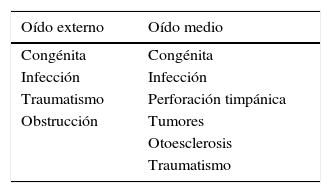La literatura científica más reciente señala el diagnóstico precoz de la sordera como elemento fundamental para definir el pronóstico educativo y de inclusión del niño sordo, pues permite aprovechar el periodo crítico de su desarrollo (0-4 años).
Existen diferencias altamente significativas entre las personas sordas estimuladas tempranamente y las que han recibido esta atención específica de forma más tardía y/o inadecuada.
La identificación temprana de los trastornos diferidos requiere de una especial atención y conocimientos entre todos los profesionales que atienden a los niños durante su infancia. Se trata de diseñar programas y de planificar acciones adicionales más allá del cribado neonatal para asegurar que todos los niños con una hipoacusia significativa sean detectados pronto.
Con este propósito, la CODEPEH quiere poner de relieve la necesidad de un seguimiento continuado de la salud auditiva de los niños, estableciendo para ello las recomendaciones contenidas en el presente documento.
The latest scientific literature considers early diagnosis of deafness as the key element to define the educational and inclusive prognosis of the deaf child, because it allows taking advantage of the critical period of development (0-4 years).
Highly significant differences exist between deaf people who have been stimulated early and those who have received late or improper intervention.
Early identification of late-onset disorders requires special attention and knowledge on the part of every childcare professional. Programs and additional actions beyond neonatal screening should be designed and planed to ensure that every child with a significant hearing loss is detected early.
For this purpose, the CODEPEH would like to highlight the need for continuous monitoring of children's auditory health. Consequently, CODEPEH has drafted the recommendations included in the present document.
Artículo
Comprando el artículo el PDF del mismo podrá ser descargado
Precio 19,34 €
Comprar ahora










